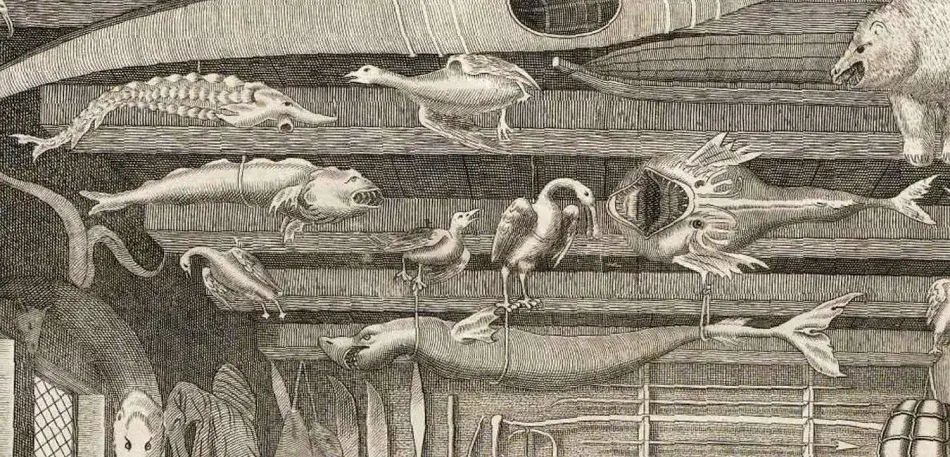
By Maggie Boyd, Associate Archivist at the Academy
In the early 1800s, the Academy received reports of a sea serpent, described as 60 to 100 feet long, in what is now Maine’s Penobscot Bay. In 1810, upon hearing that the reports had been lost, minister and politician Alden Bradford, with the assistance of Lemuel Weeks, collected and presented to the Academy sworn statements of witnesses. In doing so, Bradford acknowledged, “Accounts of this sort, I am aware, should be received with caution.”1
Sightings in 1817 prompted the Academy to appoint naturalist William Dandridge Peck to investigate further. Using the documents previously sent to the Academy by Bradford and Weeks and contemporary research by a committee of the Linnaean Society of New England on which he also served, Peck produced a report, published in the Academy’s Memoirs in 1818, concluding “the existence of the animal to which [the witnesses] relate is indisputable.”2
The Academy did not pursue the matter any further. The value of this type of evidence was tested again at an Academy meeting on December 26, 1854. Inventor William F. Channing proposed that he would “report some observations on a class of phenomena, which, while they could not certainly at present be brought within the scope of exact knowledge,” he wished to present, “but had not sufficient evidence to arrive at any conclusion.” Classicist Cornelius Felton, joined by others, replied that it was “all humbug.”3